A set of seven simple geometric shapes can challenge the mind, build problem-solving skills, and deepen spatial understanding. Tangrams are a hands-on way to explore patterns and mathematical concepts. At Oak Meadow, we appreciate how these puzzles encourage both logical thinking and creativity, making them a valuable addition to any homeschool experience.
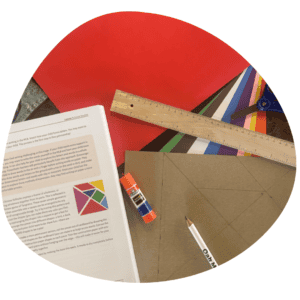 Tangram History
Tangram History
The origins of tangrams trace back to China over 200 years ago. These puzzles were shared and enjoyed across cultures, eventually making their way to Europe and America in the 19th century. The name “tangram” is thought to come from the Chinese word “tang,” referencing the Tang Dynasty, combined with the Greek suffix “gram,” meaning “drawing” or “figure.”
A traditional tangram set consists of seven geometric shapes, called “tans”: two large triangles, one medium triangle, two small triangles, a square, and a parallelogram. These simple pieces can be arranged into countless figures, from animals and people to imaginative abstract designs.
Tangrams as a Fun Homeschool Activity
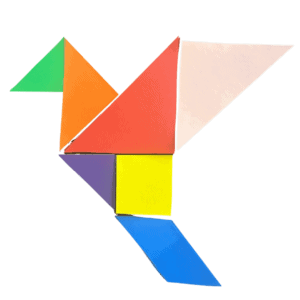
Tangrams invite hands-on exploration. As children shift and rotate the pieces to form familiar shapes or invent their own, they naturally develop spatial awareness, symmetry recognition, and problem-solving skills.
Some puzzles come together easily, while others take patience and experimentation. With each new challenge, children strengthen their perseverance and creative thinking. Learning feels like a game, making tangrams a perfect addition to any homeschool routine.
Make Your Own Tangram Set
Creating a tangram set at home is a wonderful way to bring learning to life. Follow these simple steps to make your own:
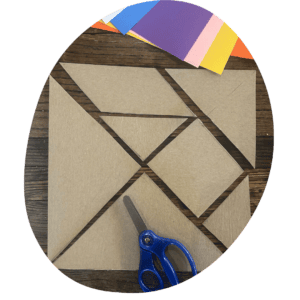
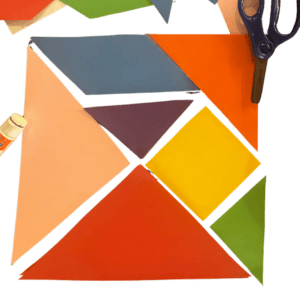
Materials You’ll Need:
- A square piece of cardstock, construction paper, or thin cardboard (6 inches by 6 inches works well)
- Ruler
- Pencil
- Scissors
Instructions:
1. Draw a Square: Using your ruler, measure and draw a perfect square on your chosen material.
2. Divide the Square: Lightly draw the following lines to form the seven tans:
- A diagonal line from the top left to the bottom right.
- A line from the bottom left corner to the midpoint of the right side.
- A vertical line from the midpoint of the top side down to the bottom diagonal.
- A horizontal line from the left side’s midpoint to meet this vertical line.
- A diagonal from the right side’s midpoint to the bottom left.
3. Cut Along the Lines: Carefully cut along the drawn lines to separate the seven tans.
4. (Optional) – Color your grams or cut out construction paper and glue on colors
5. Start Creating! Try forming different shapes, animals, and patterns. Can you make a cat? A boat? A house? Challenge yourself to use all seven pieces in a single design!
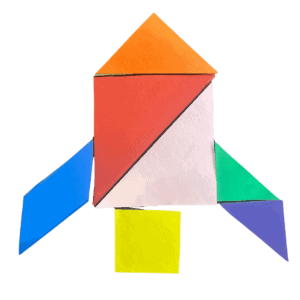
Hands-On Learning Through Play
At Oak Meadow, we believe that learning is most meaningful when it engages both the hands and the mind. Tangrams encourage children to think critically, experiment with shapes, and discover new possibilities with every puzzle they complete. Add them to your homeschool routine and see where creativity takes you!
Download a PDF printable to guide your tangram creation or get started on your own with a ruler and pencil!